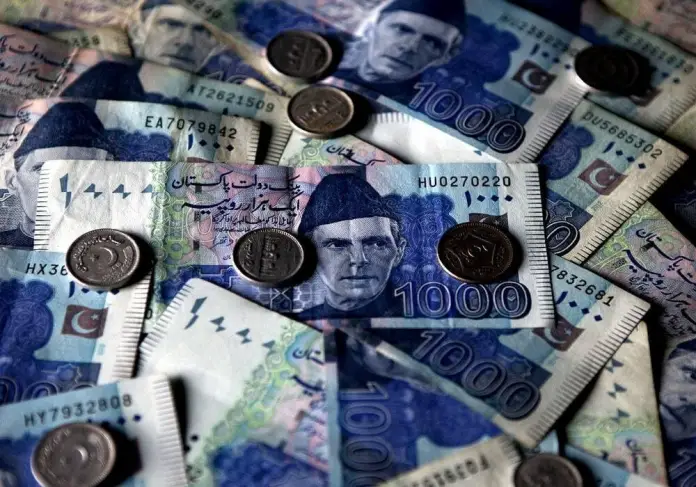Introduction: The Fiscal Year 2021-2022 is at its last days, when on June 10, 2022 this Government will be giving the next 2022-2023 Federal Budget for Pakistan. The year 2021-2022 was an interesting year as far as domestic political situation as well as international situation is concerned, and had serious consequences on the economy of the country.
For one, the Federal Budget 2021-2022 was given by the PTI government of Prime Minister Imran Khan but is ending during the PML(N) and PPP led collision government of Prime Minister Shabaz Sharif. Both these prime ministers have different views about how economy should be run and are not inclined favorably towards each other personally, politically and professionally.
When the outgoing budget was given, the country and the world were coming out of COVID-19 situation and had a dismal Pakistan’s GDP growth rate of minus 0.4%, while now in May 2022 it has been recognized by the international Financial organizations that the economy not only came out of its recession, but also had shown a robust 6.0% GDP growth, mainly due to amnesty given to the construction industry and incentives that were given to textile and other exporting industry that reversed the recessionary trends in the economy, although other sectors remained fragile for the outgoing fiscal period.
Economic Conditions May 2022: In spite of increase in exports of textiles and IT related services, in May 2022 the trade deficit of Pakistan had reached almost US Dollar 40 billion while the Balance of Payments deficit had narrowed to US dollars 0.62 billion due to inflow of remittances from overseas Pakistanis as well as because of a recent ban on import of luxury items into the country. At the same time Pakistan’s total debt has reached PK Rs 53.4 trillion (or US $ 0.27 trillion), out of which public liabilities alone had reached PK Rs. 44.4 trillion (or US $ 0.22 trillion). Pakistan’s external debt has reached PK Rs. 21 trillion (or US $ 0.10 trillion @ exchange rate PK Rs 202 = US $ 1).
On the other hand, the global economy had not recovered from the COVID-19 lockdowns when war in Ukraine was started by Russia prompting the NATO countries of the West to impose sanctions on Russia. in recent months, the Chinees economy also saw a lockdown due to reemergence of COVID-19 there. Indonesia also put a ban on all its exports, especially on palm oil, fertilizers, and other products imported by Pakistan. World prices of Oil, Gas, Cooking Oil, Wheat, Cereal, and Fertilizers etc. skyrocketed due to the ban by Indonesia on its exports, the impact of Ukrainian war on world prices, blockage of the Black Sea by Russian Navy and the western sanctions on Russia that cut both ways forcing the global economy to shrink and the freight prices to rise. All the above prompted a high global inflation followed by increase in interest rates by many central banks around the world including Pakistan, adversely affecting the buying power of millions of low income and middle-income groups in the country and around the world.
With high inflation, very low foreign exchange reserves, 13.5% interest rates and low foreign investments coming into Pakistan the Pakistan-IMF dialogue on economic bailout of US $ 2.0 billion failed in Doha this week. However, the current Pakistani government removed subsidies given on petroleum products by PTI government and increased the petroleum products with PK Rs. 30 taking petrol to almost PK Rs. 180 (US dollars 0.9) a litter. This is going to have an overall impact on the economy as cost of production would rise, cost of living and commuting would rise therefore increasing general inflation in the country, further putting adverse pressure on the fragile economy and the vulnerable sections of the society.
The socio-economic conditions in the global economy as well as in Pakistan are not positive. Also, on the political front, PTI has exerted pressures for early elections through street protests and created a parliamentary crisis in the Punjab. The government in these conditions has to give a budget for a year, when its natural life ends in a year and a half.
Short-term Issues: The problems facing this government are fiscal deficit on one hand, balance of Payments deficit on the other, fast depreciating rupee against foreign currencies, fast diminishing foreign reserves, dwindling foreign investments, high cost of living, especially for the poorer section of society and an increasing rich-poor socio-economic gap coupled with deteriorating political and law and order situation that is also not helping the economy.
Expectation and Pressures: In spite of the robust GDP growth rate, the inbuilt flaws and weaknesses of Pakistan’s economy have not enabled the economic fundamentals to stabilize, therefore the last six months of the outgoing fiscal year saw a steady decline in rupee parity with US dollar that has reached PK Rs. 202 to One US dollar thus upsetting all economic expectations of both the private sector as well as the public sector for now and for the future as well. The pressures by IMF on this government to rase taxes, and to reduce subsidies would make cost of living and investments expensive. The pressure of the people’s and the investors is to resist high prices and costs in an election year for this government is a test of nerves to be seen in the Budget 2022-2023. The budget is going to show the tilt of this government and its hard decision as a tradeoff between favoring its voters and investors or its external partners land IMF is yet to be seen.
Budget 2022-2023, – what to expect: The budget in itself is a reflection of three things at the same time. On the one hand it shows the government’s expenditures on running its day-to-day affairs. The government has announced its inability to fund development projects envisaged during the current 2021-2022 budget due to lack of funds and high cost of construction materials. That in itself means that the government was not able to realize on its tax targets. This also means that the budgetary allocations in the next 2022-2023 budget on Development would be curtailed and limited to a few ongoing projects.
- On the current expenditure side, total expenditures in budget 2021-2022 was PK Rs. 6.3 trillion, the limitation of the federal government is the servicing of debt and interest that is more than 41% (Rs. 3.0 trillion) of the current budget, the expenditure allocation on defense that is 17.6% (PK Rs. 1.3 trillion) on the current expenditures, 7.0% (PK Rs. 0.5 trillion) on running of civil government (salaries, perks etc.) and another 7.0% (PK Rs. 0.5 trillion) on pensions. A total of 72.6% of the current expenditures. The rest 27.4% include transfer to provinces, subsidies, and money for social services, law and order, health and education etc. That is not enough to look after the needs of ever increasing 225 million population of Pakistan. The pressure on this government would be to increase most of these expenditures by at least 10% taking the current expenditures to PK Rs. 7.0 trillion in budget 2022-2023.
- On the revenue side, IMF is forcing the government to increase taxes and tax rates, thus increasing the inflationary pressures on the already taxed by inflation middle and low-middle classes of Pakistan. 2021-2022 Budget had envisaged a total FBR revenue of PK Rs. 5.0 trillion – PK Rs. 2.0 trillion to be collected from direct taxes and another PK Rs. 3.0 trillion from indirect taxes. If the government has to increase the current expenditures to PK Rs. 7.0 trillion and the development expenditures to PK Rs. 1.0 trillion, the revenue to be collected should be PK Rs. 8.0 trillion for the country to give a deficit free budget. This in-turn means that the government would have to increase the tax revenue from 5.0 trillion to Pk Rs. 8. trillion (or an increase of PK Rs. 3.0 trillion – a figure that poor Pakistan cannot afford. A figure which would increase the cost of living substantially and would decrease investment levels further.
- The third issue of the budget is the direction of the economic policy of the current government. The tradeoff has to be that this budget should be investment friendly that can only happen when tax rates are reduced. The budget has to be people friendly and that can happen when indirect taxes are to be reduced. Both are impossible when the government wants to abide by the conditions of IMF. justice and protecting the citizens through robust law and order, and social securities
The balance between revenue-oriented budget and the economy orientated budget has to be made and for that serious economic thought process should have been given in making this budget. The issues facing all the governments of Pakistan to-date are that they only think for the short run and have very little input towards long-term economic policy that would help enhance land productivity, labor productivity by giving skill-based education to its children, clean drinking water, health related policy.
Conclusion: It is important to get together all stake holders on one table from industry, civil society, economics, political opponents and think tanks to create a comprehensive long-term policy for using domestic resources efficiently and to tackle long term issues of the society and economy. Important long-term issues are: (a) land productivity and food security, (b) water storage and water related issues, (c) low cost electricity (d) skill enhancement and productivity of its children and labor force as well as clean drinking water for better health of the population(f) research and technological advancement, (g) financial self-sufficiency, and (h) linking SME’s to the global market through modern effective infrastructure and logistic, all this includes thought off policy and international partnership for mitigating climate change, global warming and initiating a strategy for implementation of SDG’s. Only then can this country take a viable productive economic direction in the future and become a welfare state for all its people.







